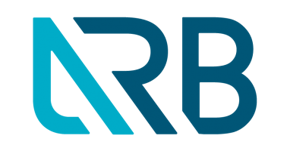
6 Key Considerations For Buying or Selling a Dealership
PARTNER SPOTLIGHT
Dealer Management System, Computer Technology, Media/Advertising, Automotive Auction, F & I/Aftermarket Products, Automotive Technology Training & Compliance
 A NHADA Gold PARTNER
A NHADA Gold PARTNERComputer Technology, Automotive Shop Equipment, Environmental Services
 A NHADA Platinum PARTNER
A NHADA Platinum PARTNERF & I/Aftermarket Products, Automotive Technology Training & Compliance, Environmental Services
.png?width=150&name=corp_logo_horz_on_light_with_trademark_symbol_1200w%20(002).png) A NHADA Diamond PARTNER
A NHADA Diamond PARTNERF & I/Aftermarket Products, Financial Services, Automotive Technology Training & Compliance
 A NHADA Diamond PARTNER
A NHADA Diamond PARTNERWhat are some key considerations when a buyer targets a dealership for purchase?
- Facilities – Whether or not a dealership’s facilities are factory-compliant influences both the attractiveness of the franchise and the value of the franchise. If a dealership is not factory compliant then a normalizing adjustment should be made to the earnings. This will reduce the historical earnings of the dealership against which a multiple or return on investment is applied, reducing the goodwill the buyer is willing to pay.
- Goodwill/“Blue Sky” – Obvious factors affecting a dealership’s intangible value (goodwill/“blue sky) are location, market size, competition and the type of franchises you already own, in addition to understanding the intrinsic value of the specific target franchise. Large discrepancies in valuation multiples exist among different franchises. Whether you are considering a luxury franchise, import franchise or domestic franchise, each will have a significant range of multiples when considering franchise value. It is also important to understand the current dealership’s reputation within its local market. Service absorption is another important component of a dealer’s profitability, so pay particular attention to an analysis of a dealer’s fixed operations and units in operation. An under-performing dealer may have more upside and may be worth more to a purchaser, than an over-performing dealership in the same market. An add-point may also be worth more to an acquiring dealer than one that is entering a new market.
- Inventory Valuation – How to define the value of the inventory you are buying is included in the letter of intent and the buy/sell agreement. New vehicle inventory is purchased at a price net of factory incentives already received by the selling dealer. The purchase price generally does not include hold back, floorplan or advertising assistance. The seller generally has already collected or will collect these factory incentives, so the buyer would not pay for them again. It is important to understand what factory incentives a manufacturer has and what should be excluded from the purchase price. Used vehicle inventory is usually purchased at a negotiated price adjusted for any modifications made to the vehicle by the selling dealer. The value paid for OEM parts inventory is usually an amount for returnable undamaged parts. The buyer and seller generally negotiate the price paid for non-OEM parts.
- Appraisal of Assets – Aside from goodwill and inventory, what other business assets are you acquiring? It is important to take an inventory and value all fixed assets. As a buyer, you should not buy assets at the value on the factory financial statement. Often times the value presented here is due to a previous purchase price allocation. Who knows if the value is accurate and representative of what you are receiving? Sellers should take note of their previous capitalization policies. Did you expense certain items? How did you account for special tools? You should ask these questions prior to putting a value on these assets. While considering the assets you are selling, you should also consider various contracts you want a potential buyer to inherit. Accumulate these contracts and make sure they can be assigned to another company.
- Quality of Management – An often-overlooked aspect of many deals is the importance of assessing a target dealership's existing workforce. If the buyer is a local dealer group, they are more likely to have existing management team personnel and/or employees they can transfer to the new dealership. However, if the buyer is an outside dealer group expanding into a new market, they are likely to be more reliant on the target dealership’s current employee base, especially its management team. Most buyers believe they can improve on the profitability of the prior dealer. If that is the case, then look carefully at what the current management team is doing or not doing. Are they the cause of poor performance, or are there other factors?
- Earnings Capacity – Normalize the target dealerships earnings by increasing or reducing expenses you expect will not apply to your new company. For example, if rent is not fair market rent, then add back or subtract an amount that will normalize rent to the fair market. If the current dealer employs family members who will not be needed at their current salary, then add back or subtract an amount that will normalize their salary. If the current dealer packs his or her extended service contracts and pays that money to a management company, then add that pack back to net income to determine normalized net income. This type of analysis will help you determine what you think you can do with this opportunity. An underperforming dealer in a high-traffic market may present more of an upside than the same type of dealer in a lower-traffic market.
It's important to work with qualified professionals when analyzing an opportunity. They should assist you with formulating a reasonable projection of earnings when targeting a dealership to acquire. Once you understand your opportunity, you can start putting together your offer. Please let anyone on our dealership services team know how we can help.


















.png?width=150&name=Ally_Final%20Logos%20and%20Pairings_11.14.2018-01%20(2).png)


-2.png?width=150&name=Wipfli%20Logo%20Blue%20RGB%20(1)-2.png)


.jpg?width=150&name=NHADA_Partner_FTR_Img_NHADA_Insurance%20(1).jpg)


.jpg?width=150&name=NHADA_Partner_FTR_Img_JMA(1).jpg)




